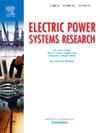基于STL分解和多分支神经网络的电动汽车充电负荷混合预测模型
IF 4.2
3区 工程技术
Q2 ENGINEERING, ELECTRICAL & ELECTRONIC
引用次数: 0
摘要
在全球电动汽车产业快速发展的背景下,准确预测充电负荷对于保证电网稳定和资源优化至关重要。针对现有模型在处理负荷数据的时空离散性、高频波动和随机性方面存在的挑战,本文提出了一种基于多支路结构的预测模型AP-STNet。该模型利用STL分解将负荷序列划分为趋势分量、周期分量和残差分量,分别通过TCENet、APGCNet和MLRDNet建模,并在统一的框架内协同优化。基于深圳18061个充电站的实证结果表明,AP-STNet在MAE、RMSE和R2方面分别优于多个主流模型36.8%、44.6%和23.7%。本研究构建了结构清晰、可解释性强的深层混合预测框架,填补了大规模充电负荷建模的研究空白,具有重要的工程和学术价值。本文章由计算机程序翻译,如有差异,请以英文原文为准。
Hybrid prediction model of electric vehicle charging load based on STL decomposition and multi-branch neural network
In the context of the rapid development of the global electric vehicle (EV) industry, accurately predicting charging loads is of vital importance for ensuring grid stability and resource optimization. Addressing the challenges posed by existing models in handling the spatiotemporal discreteness, high-frequency fluctuations, and randomness of load data, this paper proposes a prediction model named AP-STNet based on a multi-branch structure. This model utilizes STL decomposition to divide the load sequence into trend, periodic, and residual components, which are modeled by the TCENet, APGCNet, and MLRDNet respectively, and is optimized collaboratively within a unified framework. Empirical results based on 18,061 charging stations in Shenzhen show that AP-STNet outperforms multiple mainstream models in terms of MAE, RMSE, and R by 36.8%, 44.6%, and 23.7% respectively. This study constructs a clear-structured and highly interpretable deep hybrid prediction framework, filling the research gap in large-scale charging load modeling, and has significant engineering and academic value.
求助全文
通过发布文献求助,成功后即可免费获取论文全文。
去求助
来源期刊

Electric Power Systems Research
工程技术-工程:电子与电气
CiteScore
7.50
自引率
17.90%
发文量
963
审稿时长
3.8 months
期刊介绍:
Electric Power Systems Research is an international medium for the publication of original papers concerned with the generation, transmission, distribution and utilization of electrical energy. The journal aims at presenting important results of work in this field, whether in the form of applied research, development of new procedures or components, orginal application of existing knowledge or new designapproaches. The scope of Electric Power Systems Research is broad, encompassing all aspects of electric power systems. The following list of topics is not intended to be exhaustive, but rather to indicate topics that fall within the journal purview.
• Generation techniques ranging from advances in conventional electromechanical methods, through nuclear power generation, to renewable energy generation.
• Transmission, spanning the broad area from UHV (ac and dc) to network operation and protection, line routing and design.
• Substation work: equipment design, protection and control systems.
• Distribution techniques, equipment development, and smart grids.
• The utilization area from energy efficiency to distributed load levelling techniques.
• Systems studies including control techniques, planning, optimization methods, stability, security assessment and insulation coordination.
 求助内容:
求助内容: 应助结果提醒方式:
应助结果提醒方式:


